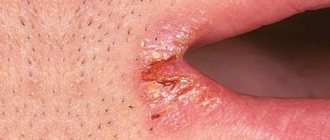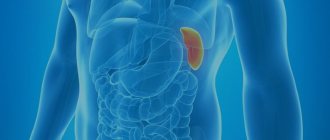Normal physiological breathing occurs through the nose. Chronic nasal congestion leads to the fact that a person cannot breathe fully, and the brain experiences a lack of oxygen. If tissues do not receive enough oxygen and nutrients, the body malfunctions.
Many people try to solve the problem with vasoconstrictor drops, but this only helps to get rid of the symptoms. In addition, their very frequent use can lead to the development of naphthyzine addiction.
Functions of the nose
At rest, one adult takes approximately 16 inhalations and exhalations per minute through the nose. The breathing rate may increase during intense physical exertion and decrease during night sleep. In one breath, an average of 500 ml of air is inhaled, that is, 12,000 l / day. This air must be purified, heated and humidified. Breathing in untreated or cold air can lead to allergies or colds.
Main functions of the nose:
- Breath. Inhaled air enters primarily through the middle nasal passage, passing through the anterior sections of the nasal concha. Exhaled air flows through the lower nasal passage along the base of the nose.
- Protection. The film on the surface of the mucous membrane can absorb smaller impurities and particles and direct them, along with certain secretions, to the nasopharynx. Also, special proteins are formed on the nasal mucosa that support the protective function and are called “humoral defense”
- Conditioning. The nasal mucosa has a large surface and is equipped with an extensive vascular network and a large number of mucus-forming glands. Thanks to this, the nose warms and humidifies the inhaled air.
—
Diagnostic methods
First of all, collecting an anamnesis helps the doctor in diagnosis. Bilateral, unilateral or alternating nature of congestion, living conditions and other circumstances help to narrow down the range of causes and make a diagnosis faster.
To reliably establish the fact of nasal obstruction, a simple interview with the patient is not enough. Complaints are subjective and therefore not always reliable, especially when it comes to children. Therefore, various instrumental methods are used in the diagnosis of diseases of the nasal cavity. Among them:
- Anterior and posterior rhinoscopy. The method involves visual inspection of the nasal passages from the nostrils and choanae using dilators and mirrors. Simple, informative and atraumatic.
- Lateral radiography of the nasopharynx. A simple method that allows you to identify pathological formations in the nasopharynx. The information content of the method is low, but it is used everywhere.
- Computed tomography of the sinuses. A modern, highly accurate and very informative method for diagnosing many diseases of the nasal cavity and paranasal sinuses. It is worth noting that X-rays and CT scans are used a limited number of times due to radiation exposure, especially for children.
- Endoscopic nasopharyngoscopy. It is one of the best methods for diagnosing diseases of the upper respiratory tract and can be performed in both adults and children from birth.
- Acoustic rhinoflowmetry. The study helps to quantify the degree of difficulty breathing due to congestion.
An ENT doctor examines a patient with nasal congestion. Photo: nomadsoul1 / freepik.com
Causes of nasal congestion
- Allergy. An allergic reaction to any substance leads to the development of swelling of the nasal mucosa. However, nasal discharge does not always occur.
- Violation of hormone levels. Often this condition appears due to an imbalance of hormones in the body, especially in women during pregnancy. After the birth of the child, this unpleasant condition disappears and breathing problems no longer arise.
- Deviation of the nasal septum. May be congenital or acquired. Complete nasal congestion without snot discharge may not develop immediately, but may develop gradually over several years.
- Bad ecology. In case of severe environmental pollution in the region where a person lives. In such cases, the nose is not able to fully perform its functions.
- Polyps in the nasal cavity. Polypous formations grow over time and close the nasal cavity, which is why congestion appears.
Stuffy nose? - This is problem
You should breathe through your nose - this is how the human body works. The air in the nose is warmed, moistened, and dust and harmful microorganisms are retained.
With free nasal breathing, the breathing rhythm slows down, which helps lower blood pressure; Air leaves the lungs more slowly, allowing the body to extract more oxygen from it. If we breathe through our mouths, then, on the contrary, cold, or dusty, or dry air immediately enters the throat, irritating the mucous membranes and contributing to the development of symptoms of pharyngitis, laryngitis and tonsillitis.
Meanwhile, quite often nasal breathing in children and adults is difficult. However, constant nasal congestion is often not perceived as a problem. We get used to breathing through our mouths and consider this situation normal. First of all, this applies to children - if a child has a stuffy nose, he is unlikely to complain about it. So parents should take a closer look at how the child usually breathes - through the mouth or nose.
Sometimes nasal congestion can be caused by a combination of reasons. It happens that even a medical examination does not completely clarify the situation. In these cases, endoscopic examination is recommended.
Why is constant nasal congestion dangerous?
Nasal congestion without mucous discharge indicates the presence of a hidden inflammatory process. The nose cannot stop breathing for no apparent reason.
If timely diagnosis and treatment are not carried out, the following dangerous consequences may occur:
- progression of the inflammatory process in the middle ear
- the formation of polyps in the nose and sinuses
- constant snoring during sleep
- inflammation of the paranasal sinuses in the form of frontal sinusitis or sinusitis
- headaches that get worse with pressure
- problems with the sense of smell and its complete loss
- lack of oxygen leads to decreased performance
If chronic nasal congestion appears in childhood, it can lead to decreased sense of smell, hearing, or mental retardation.
Diagnosis and treatment
The use of traditional vasoconstrictor drugs can alleviate the condition only temporarily. Also, such drugs easily cause addiction. The first step is to visit the doctor's office to find out why your nose is stuffy without a runny nose. Only an experienced specialist will prescribe the necessary examinations to be able to identify the true root cause of congestion. And only after this we can talk about prescribing treatment.
If it is nasal congestion due to allergies, then antihistamines are prescribed. You cannot do without products that help moisturize the mucous membranes and without medications that constrict blood vessels. Often it is not possible to find the right set of medications the first time. In this case, the doctor reviews the treatment regimen.
Treatment with Aqualor
Aqualor is a drug that can be used at the first ailments. But it is worth remembering that in some cases it cannot replace other drugs, but acts in combination with them.
Aqualor moisturizes dry mucous membranes, and due to the salts it contains, relieves inflammation and nasal congestion.
The drug helps the mucous membrane perform its main task - to flush out pathogenic bacteria and microorganisms, as well as dust particles, from the respiratory tract. In the normal state of the mucosa this is not required.
Regardless of the reasons for constant nasal congestion without a runny nose, this ailment seems insignificant only at first glance. Numerous complications can significantly aggravate the situation. If you ignore the need for treatment and let the disease take its course, you can easily develop atrophic rhinitis, chronic headaches and other troubles. Rinsing the nasal cavity will be an excellent preventive measure and will help cope with swelling of the mucous membrane at any stage of the disease. But it is important to remember that treatment must be comprehensive and carried out under the supervision of a doctor.
Prevention: to breathe easily
Most often, a clogged nose is the result of a frivolous attitude towards one’s own health. But many problems and complications can be avoided if you follow simple recommendations:
promptly treat any diseases of the ENT organs;- avoid hypothermia - dress appropriately for the weather;
- take vitamins and eat right;
- lead an active lifestyle;
- avoid stress.
Causes
Dry nose can have internal or external causes. In the former, it occurs as a symptom of the underlying disease, and in the latter, as an independent health disorder. The problem is provoked by the long-term use of vasoconstrictor drops and a number of medications that affect the functioning of the mucous membranes, and the frequent use of nasal rinses without indications for this, as well as pathologies in its structure.
During the heating season, dry mouth and nose appear due to insufficient air humidity in the room. This situation is corrected by humidifiers that dissipate water vapor, which, when breathing, enters the mucous membranes, which is why it does not become overdry.
First aid
As soon as this disease begins to bother you, and the causes have not yet been identified, the following methods of struggle will be “first aid”:
- humidifying the air in the bedroom using a wet towel thrown over the radiator or a special humidifier device;
- a course of preventive intranasal sprays or drops based on herbs;
- warming the nose with boiled eggs, salt or under a “blue lamp”;
- washing with saline solution, saline solution, decoctions (calendula, chamomile);
- inhalations based on herbs (eucalyptus, mint, chamomile, calendula, fir);
- self-massage of the wings of the nose and bridge of the nose for up to 10 minutes.
Surgery
In the context of chronic congestion and congestion without runny nose, surgical care takes precedence over medication. The remedies listed above obviously will not be able to eliminate polyps, adenoids or deviated septum. Main indications for surgical intervention:
- Adenoids.
- Polyps in the nasal cavity.
- Tumor formations of the nasopharynx.
- Choanal atresia and other defects.
- Deviation of the nasal septum.
- Foreign bodies in the nasal cavity.
- Hypertrophy of the nasal concha.
Almost all ENT operations are currently carried out minimally invasive endoscopically using reliable and safe methods of pain relief.
IRS®19 drug for the treatment of chronic runny nose
One of the most important tasks of complex treatment of rhinitis is to increase local immunity. For this purpose, immunomodulators, for example, IRS®19, can be used.
Thanks to the local nature of action and the convenient spray form, IRS®19 successfully fights harmful microorganisms directly at the site of infection, thereby reducing the severity of inflammation. Bacterial lysates activate local immunity, due to which periods of exacerbation of chronic runny nose are significantly reduced6.
With regular use, the drug strengthens the body's immune properties, reducing the number of infectious diseases. Moreover, unlike vasoconstrictor sprays, the drug has a long-term effect that can last up to 3-4 months6.
The drug has virtually no contraindications and can be prescribed to children from 3 months of age. Therefore, IRS®19 has been widely used in pediatric otolaryngology6.
Diagnostics
An otolaryngologist examines the patient and determines the cause of nasal congestion. A diagnostic search involves an instrumental examination of the nasal cavity and nearby parts of the respiratory tract. To clarify the diagnosis, laboratory tests are prescribed. The most valuable and informative are:
- Rhinoscopy
. During an instrumental examination of the mucous membrane of the nasal turbinates, inflammatory processes, deformations, and space-occupying formations are detected, which could cause breathing difficulties. To differentiate between hypertrophic and vasomotor rhinitis, an adrenaline test is performed. - X-ray examination
. If there are complaints of a stuffy nose, an x-ray of the paranasal sinuses (maxillary, frontal) is performed to identify exudate and other signs of sinusitis. To clarify the nature of the inflammatory process, sinus puncture is possible. - Laboratory research.
To exclude infection, nasal discharge is examined for the presence of pathogenic microorganisms using bacteriological culture. If a viral etiology of the disorder is suspected, an express method is prescribed - detection of virus particles in fingerprint smears of the nasal epithelium using RIF. The viral or bacterial etiology of the disease is also confirmed by serological tests (ELISA, PCR).
To quickly determine the cause of difficulty in nasal breathing, instrumental examination methods are indicated - pharyngoscopy and laryngoscopy. In order to confirm the allergic nature of nasal congestion during the period of exacerbation of symptoms, an extended immunogram is performed; after the clinical manifestations subside, allergy tests with the most common antigens are recommended. In difficult cases, other specialists are involved in the examination.
Rhinoscopy - instrumental examination of the nasal cavity
Prevention
Try to promptly and completely treat colds and other ENT diseases. Otherwise, congestion can become a chronic problem and cause complications. Ventilate the room regularly and limit contact with potential allergens to wool, dust, pollen, and aggressive household chemicals.
Walking in the fresh air, timely treatment and regular visits to your doctor can prevent any illness. Preventive measures and treatment with natural remedies will help you cope with nighttime nasal swelling. Aqualor spray is available without a doctor's prescription and is suitable for all family members. It will not only help you cope with a stuffy nose, but is also suitable as a preventative measure.
Rinomaris® is a new generation product intended for the treatment of nasal congestion
Rinomaris® is a drug of a new generation of vasoconstrictors. Rinomaris® contains xylometazoline, one of the safest vasoconstrictors, which constricts small blood vessels of the mucous membrane, thereby eliminating swelling and facilitating breathing. With the help of sea water included in its composition, Rinomaris® helps to thin mucus and reduce its stagnation in the sinuses. This allows you to prevent the proliferation of bacteria and increased inflammation with the development of possible complications (primarily sinusitis or otitis media). Rinomaris® begins to act within a few minutes after spraying and facilitates nasal breathing for 10–12 hours.










